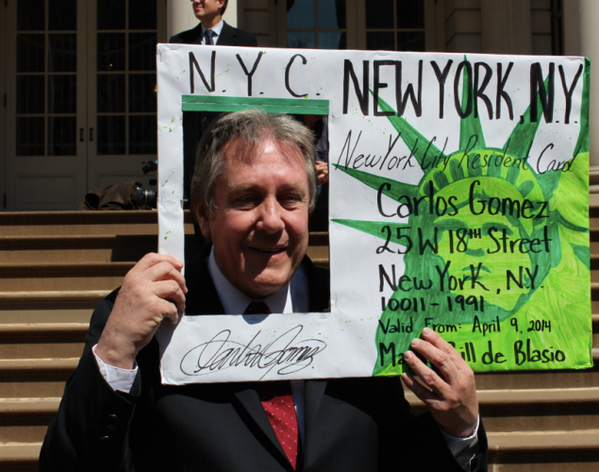
The city’s new municipal identification card, designed to help undocumented immigrants lacking official ID, may come with an enticing perk: free or discounted admission to a number of New York’s cultural institutions, reports the New York Times.
The ID cards, announced by mayor Bill de Blasio earlier this month, will be available to all New Yorkers in early 2015, allowing even undocumented cardholders to complete routine tasks such as registering for a library card and signing a lease.
Tom Finkelpearl, the administration’s cultural affairs commissioner, has asked the Cultural Institutions Group—which includes the Metropolitan Museum of Art, Lincoln Center, the Brooklyn Museum, and 30 other organizations which are located on city property—to offer other benefits, such as memberships or discounted admission.
Giving the average New Yorker incentive to sign up for the card would help ensure that carrying a card would not become an easy way to identify illegal immigrants. “All New Yorkers should want to have this card,” Finkelpearl told the Times.
A similar program introduced by San Francisco in 2008 offered discounts at golf courses, museums, and even some restaurants, but the cards have been slow to catch on. New Haven will soon allow residents to prepay for downtown parking and shopping on its cards, which have been around since 2007.
If implemented in New York, the arrangement would mark a sharp change in the relations between City Hall and cultural institutions, after the policies of the previous administration. During his tenure as mayor, Michael Bloomberg privately donated hundreds of millions of dollars to museums, while de Blasio is turning to those same institutions for help.
So far, museums appear open to the idea, but are concerned that the cards may cause some paying members to stop giving once they can get the same perks for free. A third of the Met’s 155,000 paying members, for instance, are city residents. On the other hand, the initiative could drive increased traffic to the institutions, as a broader audience would likely be tempted to visit.
The New York Metropolitan Museum of Art.
Despite the risk, institutions will likely try to work out mutually beneficial arrangements that will help the city without costing too much. “We are committed to try to do something,” Emily K. Rafferty, the Met’s president, told the Times. “Obviously anything that involves lost revenue is a concern, but we haven’t crafted anything yet.”
“We’re not trying to put anybody out of business here with something hugely burdensome,” Finkelpearl promises. He expects, however, that there will be “soul searching for every institution.”
Most likely, there will be a variety of different solutions, reflecting the differing size and scope of the institutions involved. Some museums may be free at certain times of the year, or on specific days. Lincoln Center is considering offering unsold event tickets to cardholders.
“My sense is that the reaction from cultural institutions is very positive and enthusiastic,” said Finkelpearl. “We just have to work out the details.”